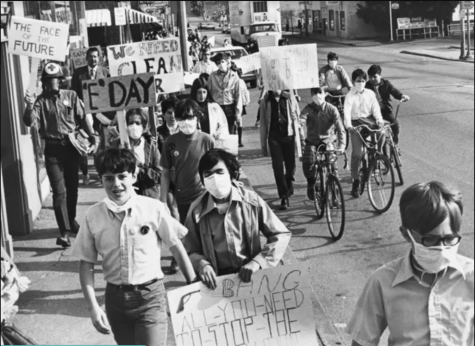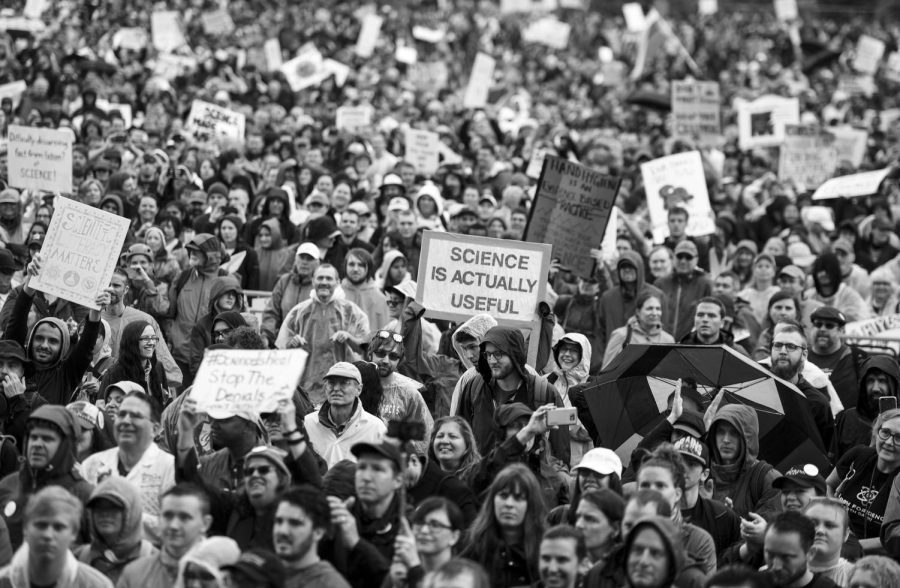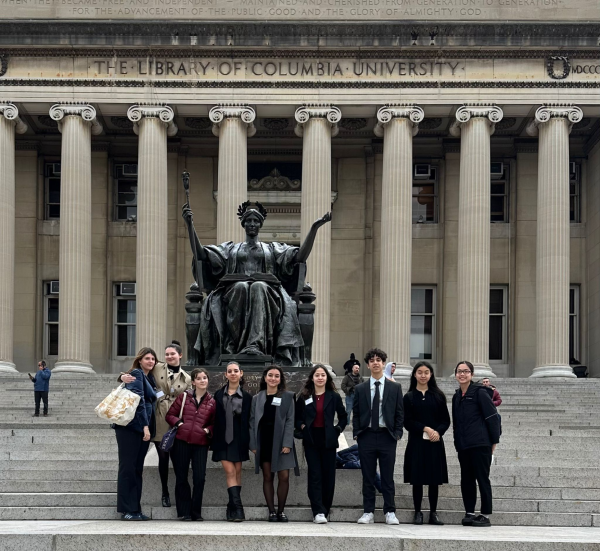Why We Celebrate Earth Day
Its origins, history, and global significance
Photo by https://www.earthday.org/history/
A photo taken during the first Earth Day protests on the 22nd of April, 1970.
On April 22nd 1970, millions of Americans took to the streets to protest. Across the country, cities and towns were crowded with people holding signs that read “Climate Action Now”, “Save Your Earth”, and “Beware of the Air You Breathe”. This was the world’s first Earth Day, during which roughly 10% of the American population at the time, or over 20 million people, came out to protest.
During the 1960s, a portion of the American population became discontented with environmental abuse, which included the careless use of chemical pesticides and thick smog that was common in many larger cities at the time. However, it was the publishing of numerous eye-opening book —including Silent Spring by Rachel Carson, The Population Bomb by Paul Elrich, and A Sand County Almanac by Aldo Leopold—that really caused the awareness surrounding such issues to grow massively.
The rising concern that many had about environmental issues was intensified as the result of environmental catastrophes which exemplified the devastating effect that humans can have on the environment. The most notable of these events include the Santa Barbara Oil Spill, which occurred in 1969 and was the largest oil spill at the time, and the Cuyahoga River fire of 1969, seen as a turning point in the government’s regulation of the environment.
Among the Americans with growing concern about the environment was Gaylord Nelson, a senator from Wisconsin. Though he was previously active in environmental politics, he was mostly inspired by other recent activist movements, such as the feminist movement, the Civil Rights Movement, and the anti-Vietnam War protests, to organize his own activism event. After seeing the aftermath of the Santa Barbara Oil Spill in the media, he took action. Originally, his idea was to have college students organize teach-ins across the country in schools. These teach-ins were supposed to raise awareness and “force [the environmental] issue onto the national agenda.”
After weeks of planning, Senator Nelson and his team came up with a name and a date for their event; the United States would celebrate Earth Day on the 22nd of April.
The first Earth Day got much more attention than was expected, as small teach-ins quickly turned into massive protests all over the country, from large cities to small towns, and from the West to the East Coast. The largest gatherings occurred in Washington DC, where 10,000 people came together at the Washington Monument, and in New York City, where part of Fifth Avenue had to be closed off due to the protest.

Earth Day allowed a multitude of environmental movements with limited aims, ranging from opposing the use of chemical pesticides or polluting cars, to unite in order to spark legislative change. It also fostered a sense of unity among different groups of the American population, since they were all protesting for a shared concern; people from all ethnicities, classes, political orientations, and backgrounds came out to protest.
Due to the large turnout during these first protests, the environmental issue was forced onto the national political agenda, as was originally intended. Politicians felt pressured into taking legislative action, and Earth Day is often credited for inspiring the signing of many pieces of environmental legislation, including the 1970 Clean Air Act and 1972 Clean Water Act. However, the most important effect of Earth Day was the signing of the National Environmental Policy Act (NEPA), which requires, to this day, that politicians consider the environmental impacts of their actions before making decisions.
Of course, such a large protest causes not only legislative change, but societal change as well. Polls from 1967 and 1971 show an increased awareness of the environment amongst American citizens after Earth Day. In 1971, approximately 25% of the population said that they believed the protection of the environment to be an important goal, a 2,500% increase from 1969.
A second official Earth Day was not officially organized until 1990, the 20th anniversary of the original protests. This time, Earth Day went global, with people from over 141 different countries participating in protests and other related events. The main subjects of the protests were the hole in the ozone layer and plastic pollution, although climate change due to global warming was also given some attention.
This second Earth Day in 1990 is credited for causing the UN to organize the 1992 Earth Summit in Rio de Janeiro, which eventually led to the signing of the Kyoto Protocol in 1997. It also “gave a huge boost to recycling efforts worldwide.”
In 2000, on the 30th anniversary of the original protests, approximately 200 million people participated in Earth Day, with a record number of people from 184 different countries joining in. Protests that year targeted the use of clean energy sources, but with the issue of global warming becoming more pressing, this was also a large focus.
Since 2000, Earth Day protests have grown in attendance and continue to be extremely popular. In 2010, the record number for international participation was set, with people from 192 different countries joining in.
In more recent years, the environmental movement has taken on a more modern face due to the urgency of climate change and the digital age. Although much about the protests has changed, the overarching goal remains the same. Furthermore, the yearly Earth Day protests and activities have continued to inspire new generations to take action on the environment, and it has sparked many more legislative changes since its landmark years. It has inspired the United Nations to continue hosting yearly climate conferences—called COPs or Conference of the Parties— in which they are able to talk about and take action on climate change. And every year, April 22 serves as a time for people to come together and unite behind a shared concern for the environment.

Hi! I'm a student in the class of 2025 and in my free time I enjoy playing soccer, drawing, and reading. For UNISVerse, I prefer researching and writing...












